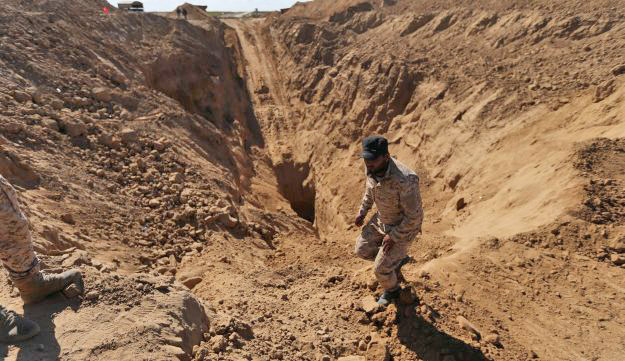Australia/Israel Review
Israel’s tunnel-busting breakthrough foils Hamas
Dec 20, 2017 | Amos Harel

Amos Harel
The Israeli army’s discovery on Dec. 10 of a Hamas attack tunnel dug into Israeli territory in the Western Negev – the second such find in six weeks – reflects a shift in the military balance between Israel and Hamas.
The Gazan group’s tunnel project was originally conceived of as a “bypass” – a way to try to deal with Israel’s total military superiority over the Palestinians above ground. The tunnels were dug beneath the border between the Gaza Strip and Israel to provide Hamas (and, to a lesser extent, Islamic Jihad – whose own tunnel was located and destroyed at the end of October) with the capability for a surprise attack against the Israel Defence Forces and to extract a price from Israel.
This strategy was successfully employed in the kidnapping of Israeli soldier Gilad Shalit in 2006 and – to a wider extent, but with more limited success – throughout the Gaza war in the summer of 2014. After that conflict – and very belatedly – the Israeli defence establishment finally achieved a breakthrough in dealing with the tunnels.
Earlier this year, construction began on an anti-tunnel defensive barrier along the entire border with the Gaza Strip. The expensive project, which according to latest estimates will cost almost 4 billion shekels (A$1.5 billion), is meant to block the digging of all future such tunnels into Israel, cut off existing tunnels passing under the border and help in locating new and old excavations.
The first fruits of the new defence system, whose construction is expected to finish by the end of 2018, are already being seen.
The two tunnels the IDF just exposed – the Islamic Jihad one near Kibbutz Kissufim, and now Hamas’ tunnel near Kibbutz Nirim – were located and destroyed in border areas where the construction of the barrier has yet to begin.
The IDF is now openly declaring: We have a new method and know it works really well – and we will continue to use it until the rest of the tunnels are destroyed.
Israeli intelligence services estimate that a number of border tunnels exist but have yet to be identified – both from before the 2014 Gaza war and after. But it’s now clear that the strategic asset Hamas developed in Gaza will gradually be denied it, given the new operational methods developed by the IDF.
This is the stage at which Hamas will have to reconsider its military strategy and the structure of its military forces – not just concerning any continued investment in the assault tunnels, but also the question of whether to hurriedly make use of operational tunnels before the IDF locates and destroys them, too.
So far, Hamas has not tried to disrupt the construction of the barrier along the border, which is being built inside Israeli territory. This Palestinian restraint stems not only from a lack of international legitimacy for such a move, but mostly out of fears that a barrier battle will lead to a new war with Israel – from which Hamas has more to lose.
This is because Gaza’s infrastructure is not functioning and there is a severe economic situation in the Strip. None of these realities is changing, so it is difficult to see how Hamas can escalate the situation against Israel given its own difficulties.
The situation in the Gaza Strip is influenced by two other developments in the diplomatic sphere: One concerns the violent protests over US President Donald Trump’s recognition of Jerusalem as the Israeli capital last month; the other is the ongoing reconciliation efforts between Hamas and the Palestinian Authority.
Hamas leader Ismail Haniyeh may have called for a new intifada in response to Trump’s announcement, but that referred mostly to the territories controlled by the PA in the West Bank. The confrontations that occurred along the border fence between Israel and Gaza were of a limited nature. After Salafi organisations fired a few rockets from Gaza into the Negev, Hamas took steps to rein in any firing of missiles.
Meanwhile, another date in the reconciliation agreement passed by without implementation: Dec. 10 was supposed to mark the arrival of PA ministers and officials into the Gaza Strip, and after that, the official opening of the Rafah crossing between Egypt and Gaza. Differences of opinion between the PA and Hamas are making it difficult to achieve the goal of reopening this crossing, which is essential for Hamas to meet the expectations of Gaza’s residents.
It’s possible that the fear of an escalation with Israel may also bring a halt to reconciliation efforts. The removal of the Egyptian blockade on Gaza will be one of the concerns Hamas’ leadership will have to bear in mind before it risks another broad conflict with Israel.
Amos Harel is military correspondent and defence analyst for Haaretz newspaper. © Haaretz (www.haaretz.com), reprinted by permission, all rights reserved.
Tags: Hamas






